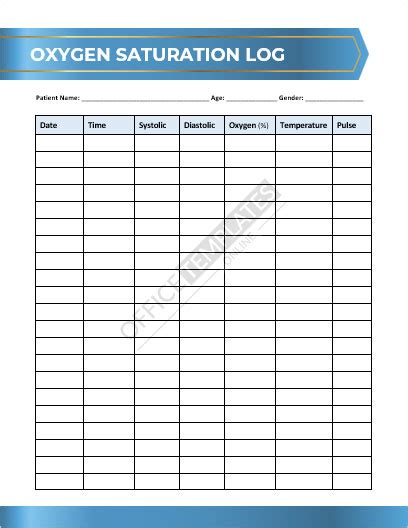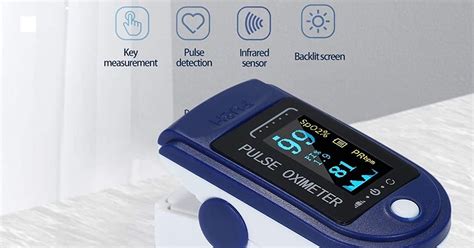O2 Saturation Range

Oxygen saturation, often referred to as SpO2, is a vital sign that measures the percentage of hemoglobin in the blood that is saturated with oxygen. It provides crucial information about the efficiency of the respiratory system and the overall oxygenation of the body's tissues. Maintaining optimal O2 saturation levels is essential for proper bodily function and is particularly important for individuals with respiratory conditions or those undergoing certain medical treatments.
Understanding O2 Saturation Range

The O2 saturation range indicates the extent to which hemoglobin, a protein in red blood cells responsible for carrying oxygen, is loaded with oxygen molecules. This range is typically measured using pulse oximetry, a non-invasive method that shines light through a thin part of the patient’s body, usually a fingertip or earlobe, to detect how much oxygen is present in the blood.
A normal O2 saturation range for a healthy individual is considered to be between 95% and 100%. However, this range can vary slightly depending on factors such as age, underlying health conditions, and the altitude at which the measurement is taken. For example, at higher altitudes with lower oxygen levels, a slightly lower O2 saturation is considered normal.
Optimal Oxygen Saturation Levels
Maintaining optimal oxygen saturation levels is crucial for overall health and well-being. When oxygen saturation drops below the normal range, it can lead to hypoxemia, a condition characterized by low levels of oxygen in the blood. Hypoxemia can have severe consequences, including shortness of breath, rapid breathing, and in severe cases, respiratory failure.
For individuals with respiratory conditions such as chronic obstructive pulmonary disease (COPD) or cystic fibrosis, maintaining O2 saturation within the normal range is a key aspect of their treatment plan. These patients often require supplemental oxygen therapy to ensure their oxygen levels remain stable and within a healthy range.
Even for healthy individuals, understanding and monitoring O2 saturation can be beneficial. For instance, during strenuous exercise, it's normal for oxygen saturation to drop slightly as the body's demand for oxygen increases. However, if O2 saturation remains consistently low even at rest, it could indicate an underlying health issue that warrants further investigation.
| O2 Saturation Range | Interpretation |
|---|---|
| 95% - 100% | Normal, healthy range for most individuals |
| 90% - 94% | Mildly low, may indicate a need for further assessment |
| Below 90% | Low, requires immediate medical attention |

Factors Affecting O2 Saturation
Several factors can influence O2 saturation levels, including:
- Altitude: Oxygen levels decrease with increasing altitude, leading to a natural decrease in O2 saturation. This is why individuals may experience shortness of breath or fatigue when climbing to higher elevations.
- Respiratory Conditions: Chronic respiratory diseases like COPD, asthma, or pneumonia can reduce O2 saturation due to impaired lung function.
- Sleep Disorders: Sleep apnea, a condition where breathing stops and starts during sleep, can cause fluctuations in O2 saturation levels.
- Heart Conditions: Certain heart problems, such as congenital heart defects or heart failure, can impact the body's ability to circulate oxygenated blood effectively.
- Smoking: Smoking damages the lungs and reduces their ability to take in oxygen, leading to lower O2 saturation levels.
Pulse Oximetry: A Non-Invasive Monitoring Tool

Pulse oximetry is a simple and painless method used to measure O2 saturation levels. It works by emitting two wavelengths of light (red and infrared) through the patient’s skin and measuring the light absorption characteristics of the blood. This allows for a non-invasive and continuous monitoring of oxygen saturation, heart rate, and pulse strength.
Pulse oximeters are widely used in various healthcare settings, including hospitals, clinics, and even at home. They provide real-time data, which is especially valuable for monitoring patients with respiratory conditions or those who require supplemental oxygen therapy. By regularly checking O2 saturation, healthcare providers can adjust treatment plans and ensure the patient's oxygen levels remain within a healthy range.
Limitations of Pulse Oximetry
While pulse oximetry is a valuable tool, it does have certain limitations. It may not accurately measure oxygen saturation in certain situations, such as when the patient has poor blood circulation or is experiencing extreme variations in blood pressure. In these cases, more invasive methods, such as arterial blood gas analysis, may be necessary to obtain accurate readings.
Additionally, pulse oximetry does not provide information about the body's oxygen consumption or the partial pressure of oxygen in the blood, which are important indicators of respiratory function. These measurements require more complex tests and are typically used in specialized medical settings.
The Role of O2 Saturation in Treatment
Understanding and monitoring O2 saturation levels plays a critical role in the diagnosis and management of various health conditions, particularly those affecting the respiratory and cardiovascular systems.
Respiratory Conditions
For individuals with respiratory diseases, such as COPD or asthma, maintaining optimal O2 saturation is a key treatment goal. Supplemental oxygen therapy is often prescribed to ensure that oxygen levels remain within a healthy range, helping to alleviate symptoms and improve quality of life.
Regular monitoring of O2 saturation allows healthcare providers to adjust the oxygen flow rate or the type of oxygen delivery system used. This ensures that patients receive the appropriate level of oxygen support, optimizing their respiratory function and overall well-being.
Cardiovascular Health
O2 saturation levels can also provide insights into cardiovascular health. In certain cardiovascular conditions, such as heart failure or pulmonary hypertension, the heart’s ability to pump blood efficiently can be compromised. This can lead to reduced oxygen delivery to the body’s tissues, resulting in lower O2 saturation levels.
By monitoring O2 saturation, healthcare providers can assess the severity of cardiovascular conditions and track the effectiveness of treatment interventions. For instance, if O2 saturation improves with medical therapy or lifestyle changes, it suggests that the treatment is working effectively.
Conclusion: The Significance of O2 Saturation Monitoring
O2 saturation monitoring is a critical aspect of healthcare, providing valuable insights into the respiratory and cardiovascular health of individuals. Whether for the management of chronic respiratory conditions, the assessment of cardiovascular function, or simply for monitoring overall well-being, maintaining optimal O2 saturation levels is paramount.
With the advancements in non-invasive monitoring technologies like pulse oximetry, healthcare professionals now have a convenient and accurate tool to continuously assess oxygen saturation levels. This allows for timely interventions and adjustments to treatment plans, ultimately improving patient outcomes and quality of life.
What is considered a low O2 saturation level?
+A low O2 saturation level is typically considered to be below 90%. At this point, medical attention is often required, as it indicates that the body’s tissues are not receiving sufficient oxygen.
Can O2 saturation levels vary throughout the day?
+Yes, O2 saturation levels can fluctuate throughout the day. Factors such as physical activity, stress, and even body position can influence oxygen saturation. It’s normal for levels to decrease slightly during exercise or when lying down, but they should return to normal ranges once activity stops or the body is repositioned.
How often should O2 saturation be monitored for individuals with respiratory conditions?
+For individuals with respiratory conditions, regular monitoring of O2 saturation is crucial. The frequency of monitoring can vary depending on the severity of the condition and the individual’s symptoms. In some cases, continuous monitoring may be recommended, especially during periods of increased respiratory distress or when starting new treatments.



